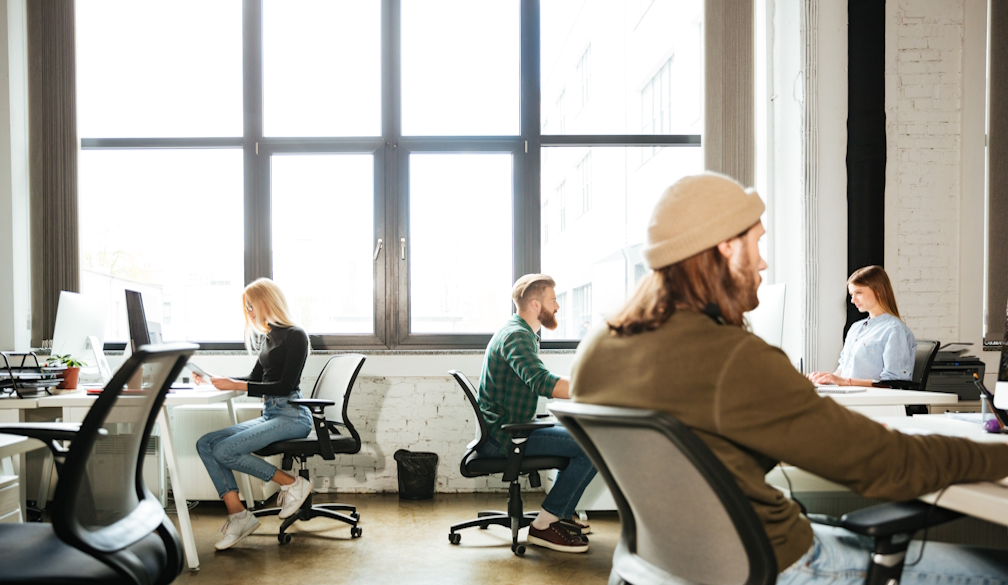Australian Workplaces 2026: Why Office Furniture Stools Are Gaining Ground in Modern Design
- Written by News Agency

Sydney, Australia — 2026 — As Australian workplaces continue to evolve at a rapid pace, a once-overlooked piece of furniture is stepping into the spotlight: the stool. From drafting stools in design studios to height-adjustable seating in schools and laboratories, office furniture stools are becoming an essential part of workplace design for 2026.
The trend towards agile working, ergonomics, and space efficiency has created fertile ground for this humble seating option. For decades, stools were considered niche — reserved for architects, lab technicians, or artists. But today, organisations across business, education, and government are discovering that stools can support both wellbeing and productivity in hybrid work environments.
Why 2026 Is Different: The New Demands of Modern Workspaces
The push for stools is not just about fashion. It is a practical response to the three major challenges reshaping Australian workplaces in 2026:
- Hybrid Work and Space Fluidity
Businesses are reconfiguring offices to serve both in-person collaboration and flexible, part-time occupancy. Stools take up less space than traditional chairs and can easily be moved into huddle zones, meeting pods, or breakout spaces. - Ergonomic Awareness
Following Safe Work Australia’s continued emphasis on workplace ergonomics, employers are under pressure to reduce musculoskeletal risks. Stools — particularly adjustable drafting stools — promote dynamic postures, encouraging staff to switch between sitting and standing. - Budget and Sustainability Concerns
With tighter budgets and stronger ESG (Environmental, Social, Governance) targets, furniture must be durable, multi-use, and sustainable. Stools check all three boxes: they are long-lasting, adaptable, and manufactured in recyclable materials.
The Rise of Drafting Stools in Corporate and Creative Workplaces
One of the fastest-growing categories is the drafting stool, designed for use with sit-stand desks or counter-height workstations. These stools are especially popular in:
- Design studios and tech hubs where agile teams need flexible seating.
- Healthcare and laboratory settings where staff alternate between standing tasks and note-taking.
- Education and training facilities that want to give students freedom of movement while encouraging attentive posture.
The key advantage of stools lies in their adjustability. Height-adjustable drafting stools allow users to maintain correct posture whether working at standard desk height or higher standing benches. Features like foot rings, breathable mesh backs, and swivel bases provide additional support and comfort.
For businesses looking to future-proof office layouts, investing in office furniture stools is no longer just a side consideration — it is a forward-thinking choice.
Case Study: A Melbourne Marketing Agency
A Melbourne-based agency recently introduced drafting stools into its creative zones alongside sit-stand desks. Within six months, managers reported:
- A 15% increase in cross-team collaboration during breakout sessions.
- Reduced complaints about back and shoulder discomfort among designers.
- Faster turnaround on brainstorming sessions, as staff felt “freer” to move and shift posture.
The change reinforced a simple truth: sometimes small, inexpensive upgrades have a bigger cultural impact than large-scale renovations.
Schools, Labs, and Councils Embrace Stools in 2026
It’s not just the private sector driving demand. Government and educational institutions are also adopting stools at scale.
- Schools and universities are introducing stools in collaborative classrooms, where students move between whiteboards, lab stations, and group pods.
- Councils and public libraries are adding stools to community learning spaces, creating more inclusive environments for different age groups and mobility needs.
- Medical and scientific labs are prioritising stools with ergonomic certification, giving staff safe seating during long hours of repetitive tasks.
By 2026, these public-sector investments are expected to influence private businesses, encouraging a mainstream adoption curve similar to what happened with sit-stand desks five years earlier.
Ergonomics and Wellbeing: A Priority for Australian Employers
Research continues to link static sitting with health risks ranging from lower back pain to cardiovascular issues. While sit-stand desks have helped, many workplaces still struggle to keep staff moving throughout the day.
Stools provide an elegant middle ground:
- Dynamic postures: Unlike fixed chairs, stools encourage micro-movements that reduce strain.
- Active engagement: Employees sitting slightly higher are naturally more alert in meetings and creative sessions.
- Compact ergonomics: Stools offer comfort without bulk, freeing up space in smaller offices.
A recent workplace survey conducted in Sydney found that 68% of employees who switched to stools for part of their week felt “more energised” and “less stiff” compared to traditional chairs.
Sustainability: The 2026 Business Imperative
Sustainability is no longer optional. In 2026, procurement teams must consider lifecycle impacts when purchasing office furniture. Stools offer advantages here too:
- Less material usage compared to bulky task chairs.
- Recyclable frames in steel and aluminium.
- Durability, with many models designed for 24/7 use.
Forward-thinking suppliers are already offering eco-certified stools made with responsibly sourced timber and low-VOC finishes, aligning with Australia’s national carbon reduction goals.
Looking Ahead: The Future of Stools in Australian Workplaces
By 2026, the role of stools in office design is expected to expand further:
- Integration with modular furniture systems will allow stools to lock into collaborative pods and meeting benches.
- AI-driven ergonomic assessments may recommend stools as part of tailored seating plans for employees.
- Hybrid home/office crossovers will see stools purchased not only for corporate settings but also for remote workstations and study nooks.
What was once considered “alternative seating” is now entering the mainstream vocabulary of office planning. For facilities managers, HR leaders, and architects, the message is clear: stools are no longer optional — they are strategic.
Broader Economic Impact
Analysts suggest that the rise of stools reflects a wider pattern in Australian office design: smaller, smarter, and more adaptable furniture solutions.
- Furniture imports for stools and related accessories have grown steadily over the past three years.
- Domestic manufacturers are responding with eco-friendly, locally made ranges targeted at education and healthcare.
- Retailers note that SMEs — once slow adopters — are now driving a significant portion of stool purchases, highlighting a democratisation of ergonomic design.
The result? A category once overlooked is now delivering tangible economic and cultural value.
About Office Furniture Designs
Office Furniture Designs is a leading Australian provider of ergonomic and commercial furniture solutions for business, government, and education. With expertise in workspace planning and a commitment to sustainability, the company supplies everything from sit-stand desks and ergonomic seating to storage, lockers, and presentation tools.
Its curated range of office furniture stools helps organisations support employee wellbeing while adapting to the evolving demands of hybrid work in 2026.
Media Contact
Media Relations
Office Furniture Designs
Email: sales@officefurnituredesigns.com.au
Phone: 1300 881 151
Website: https://officefurnituredesigns.com.au/pages/contact














